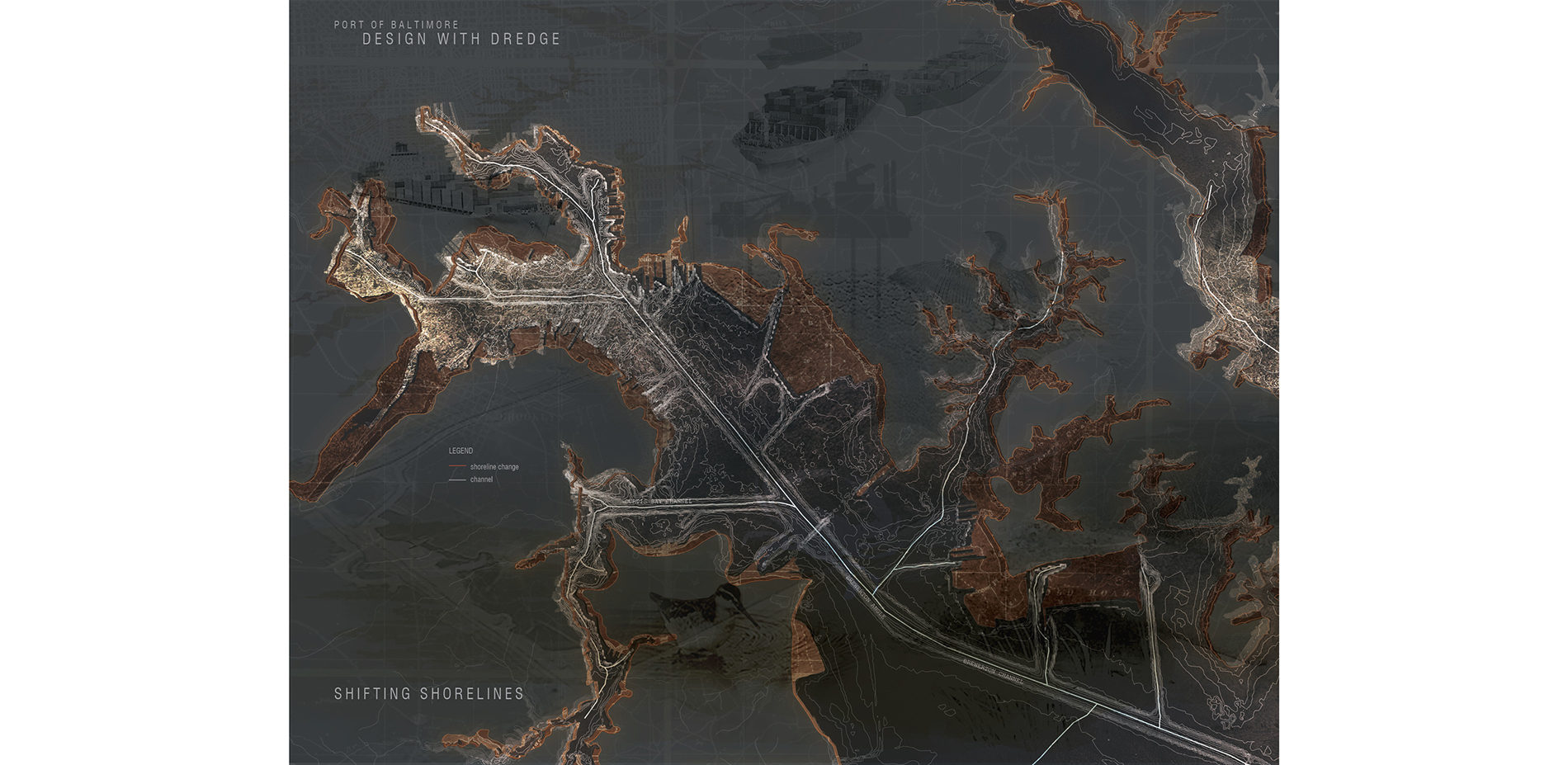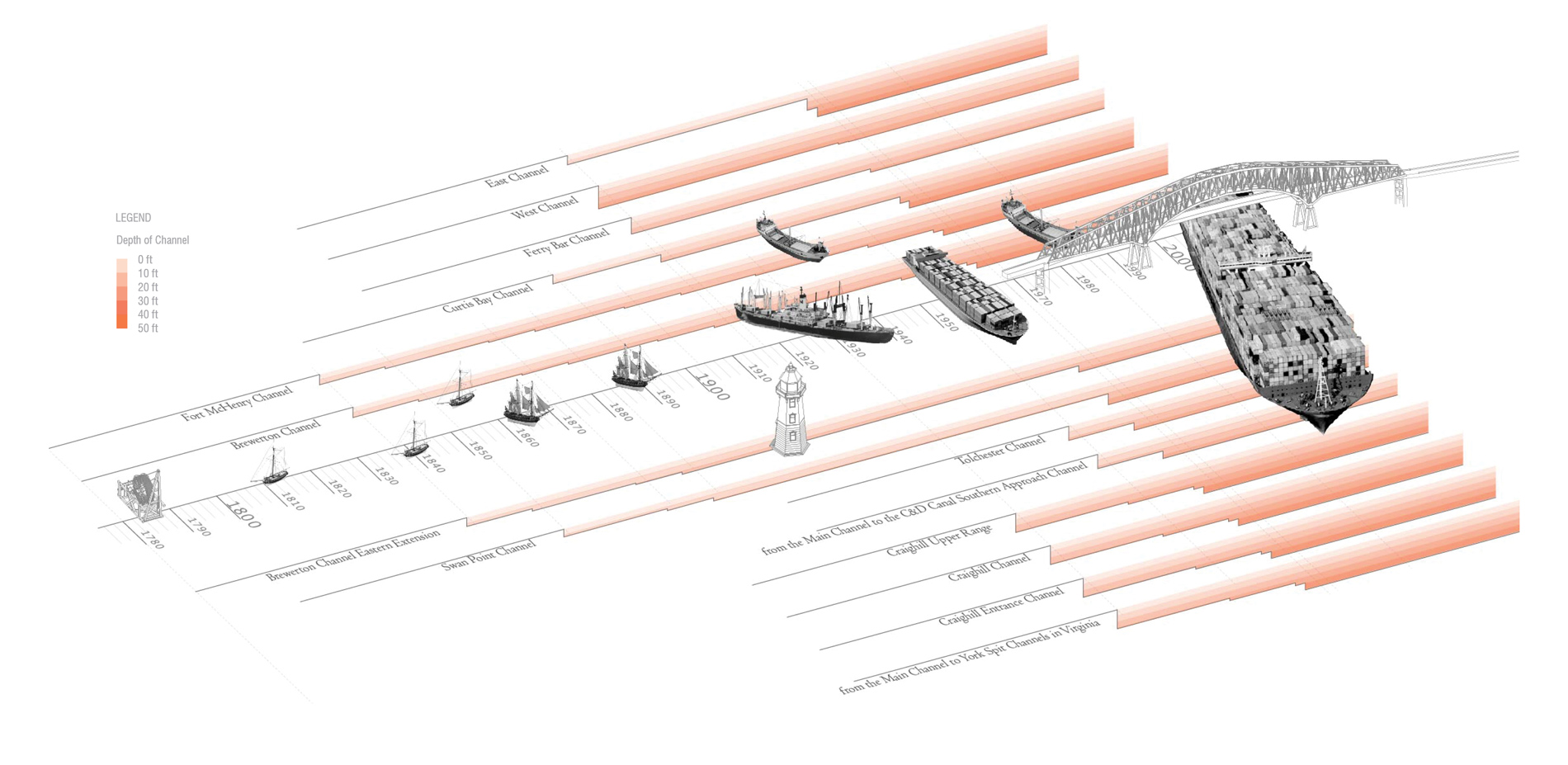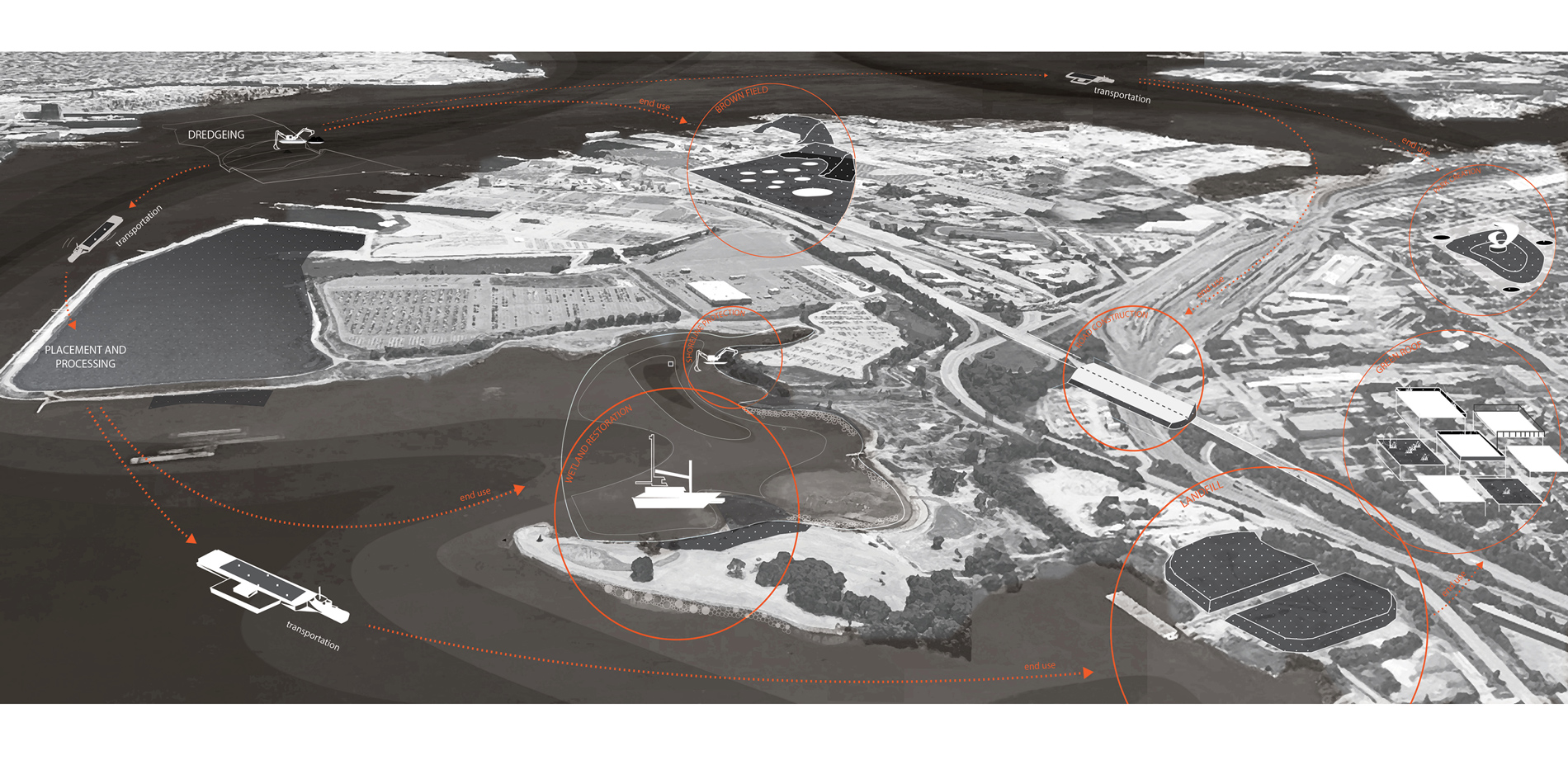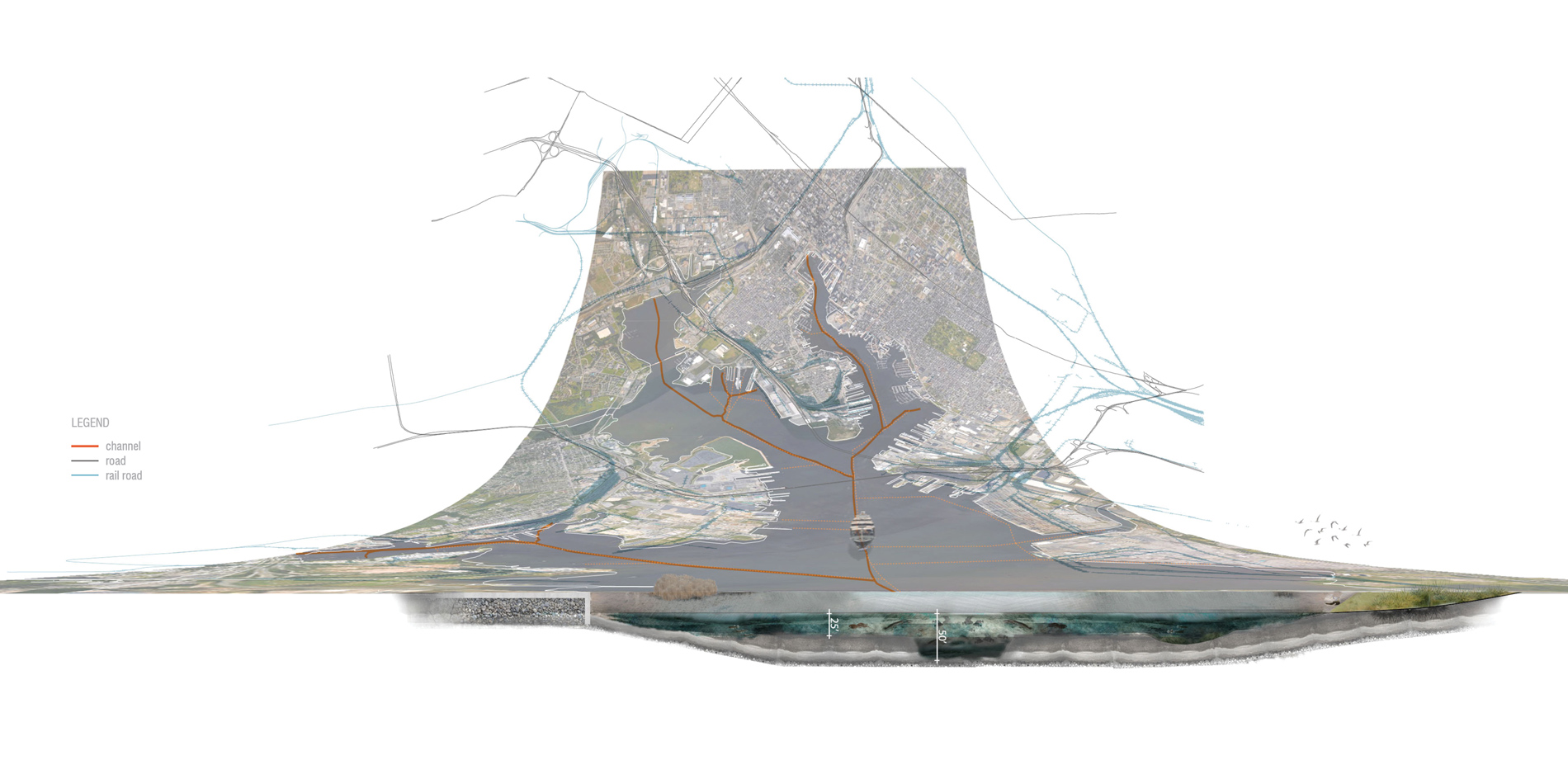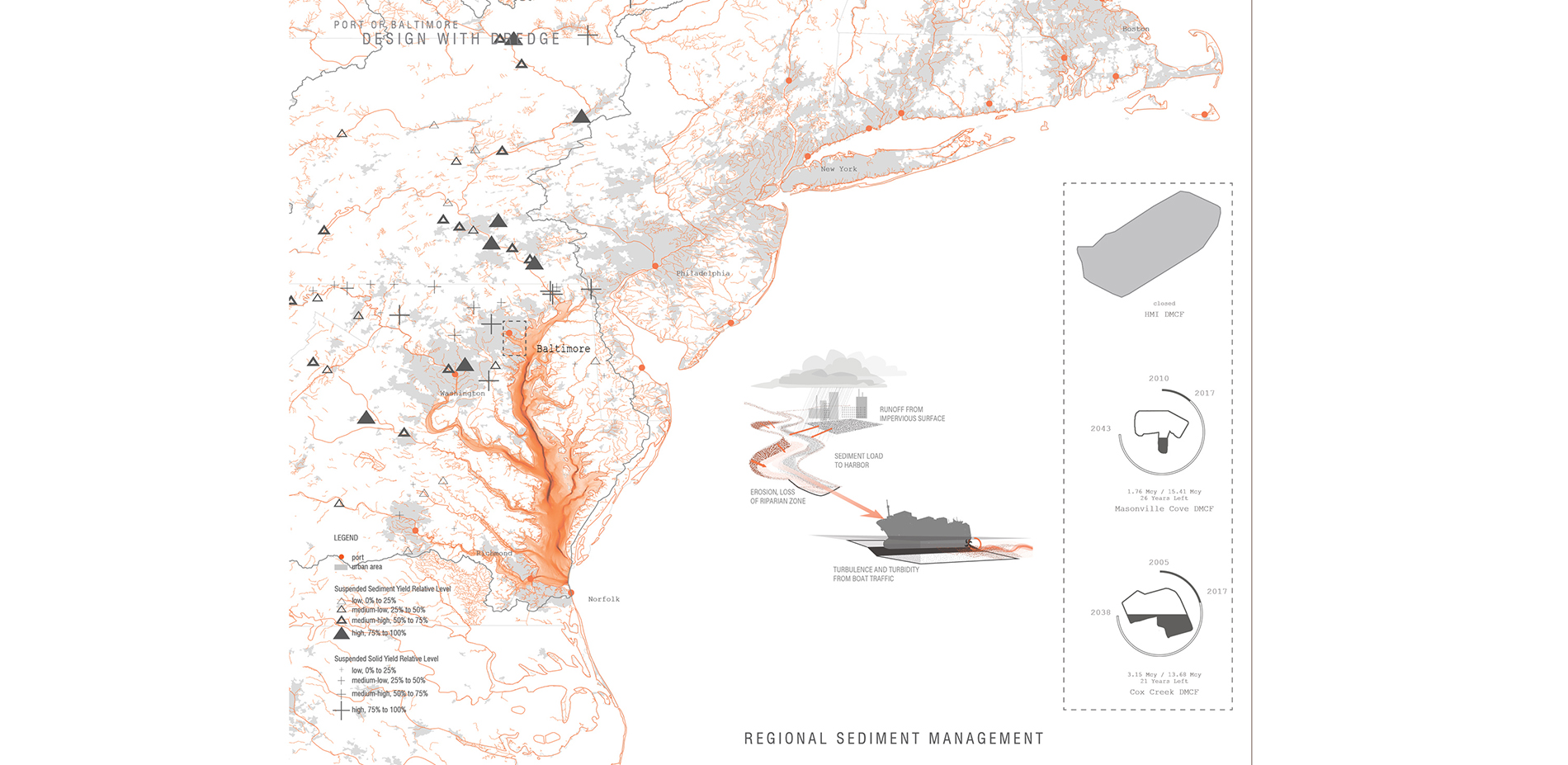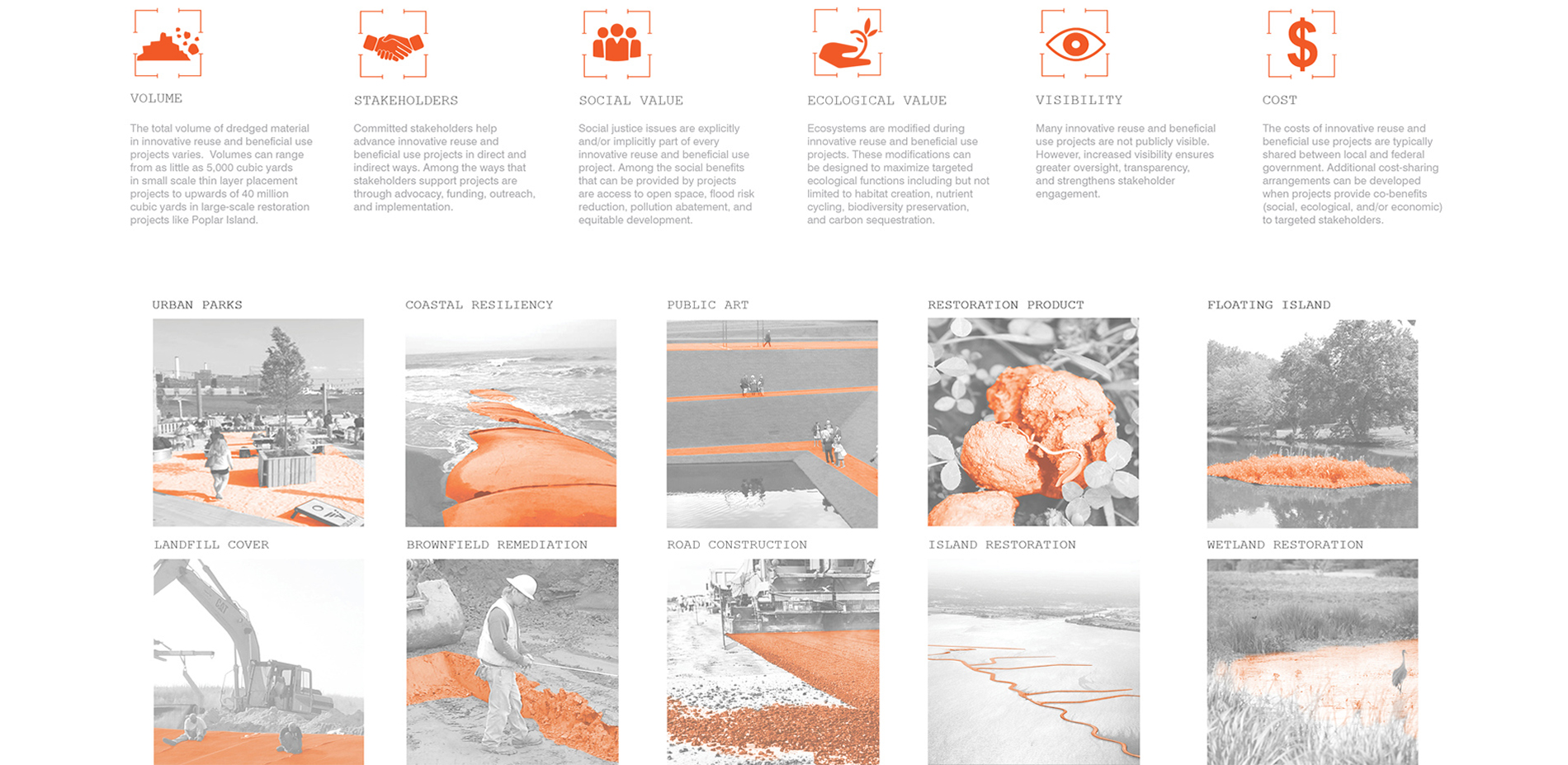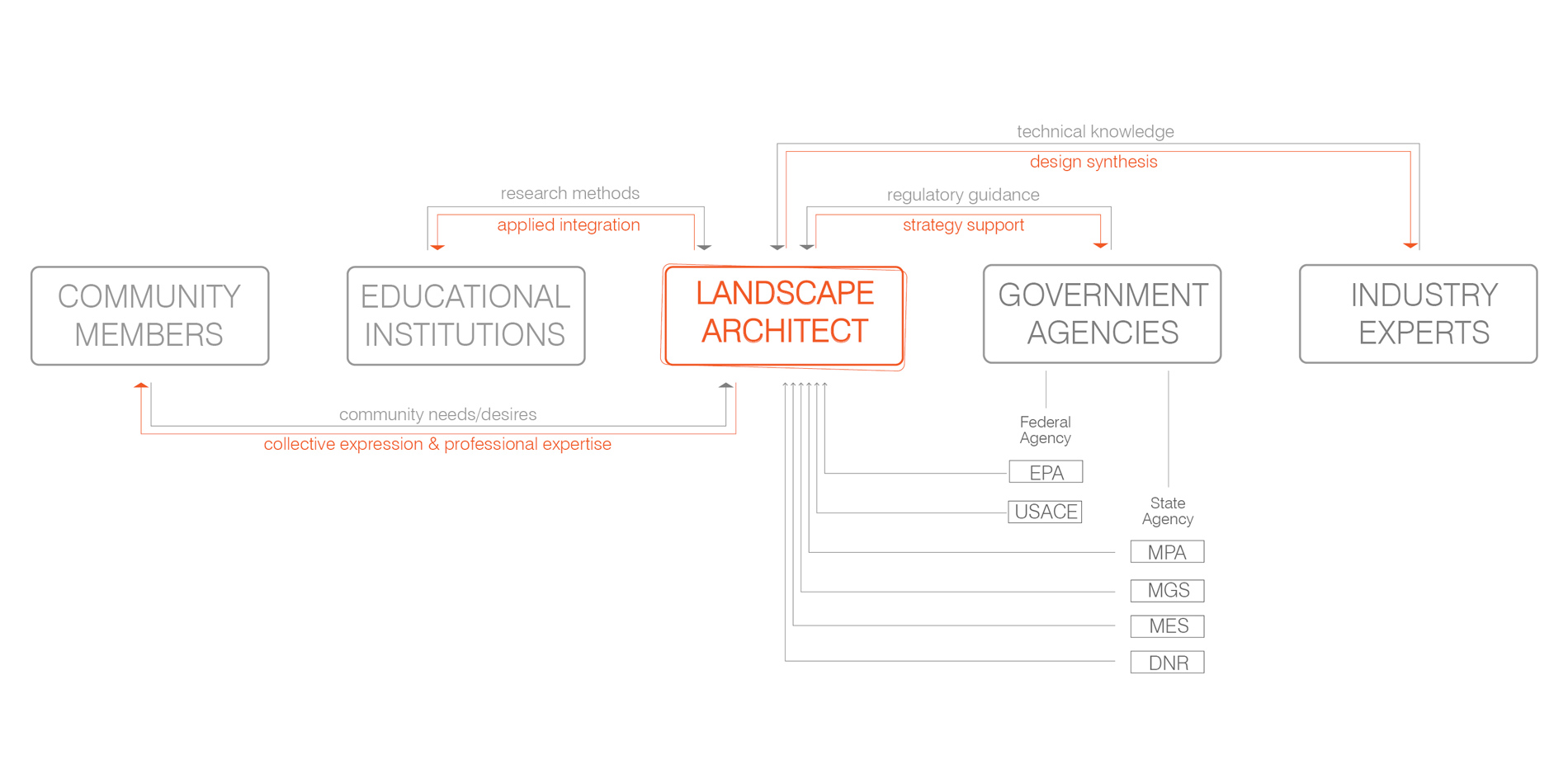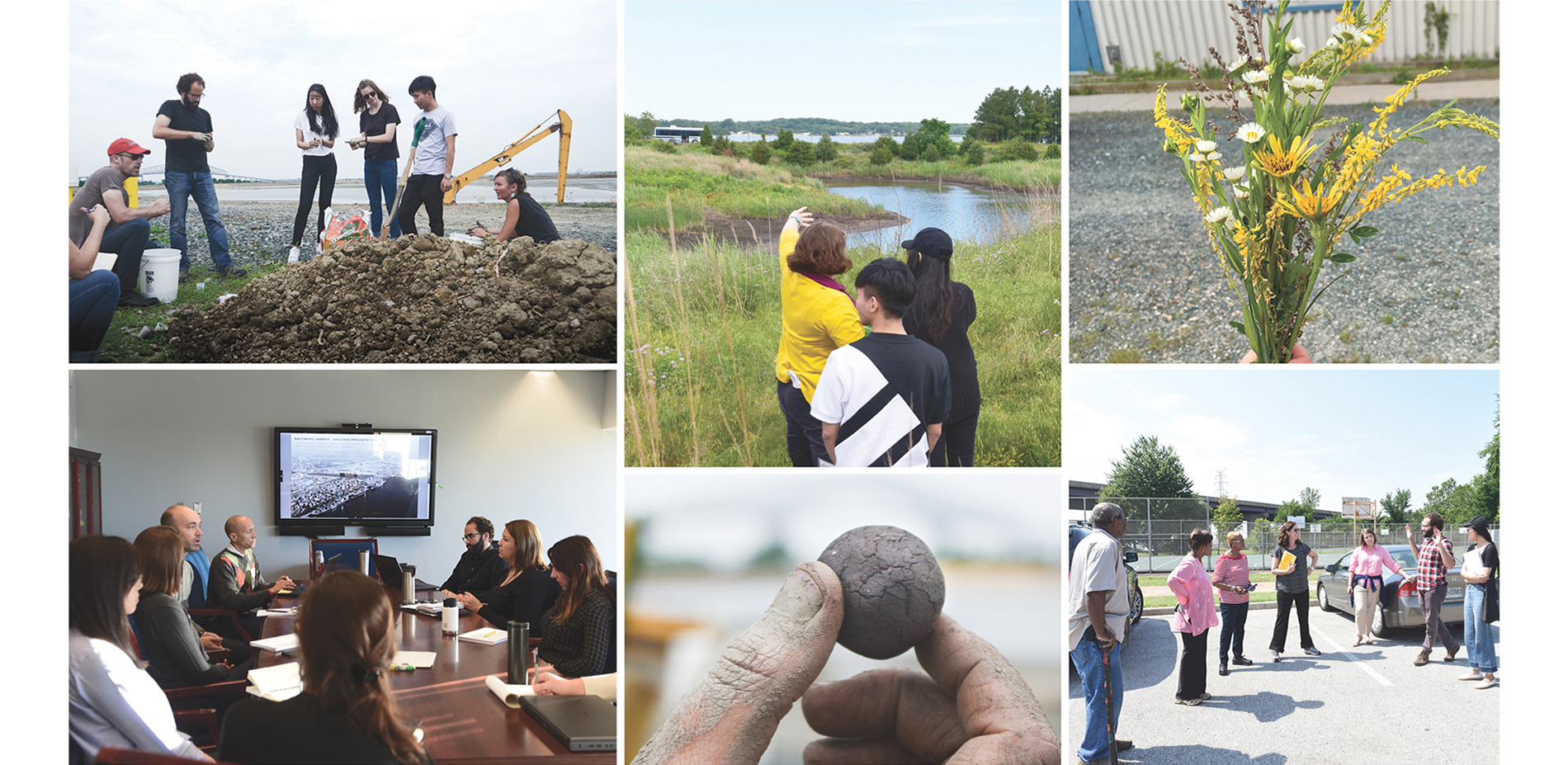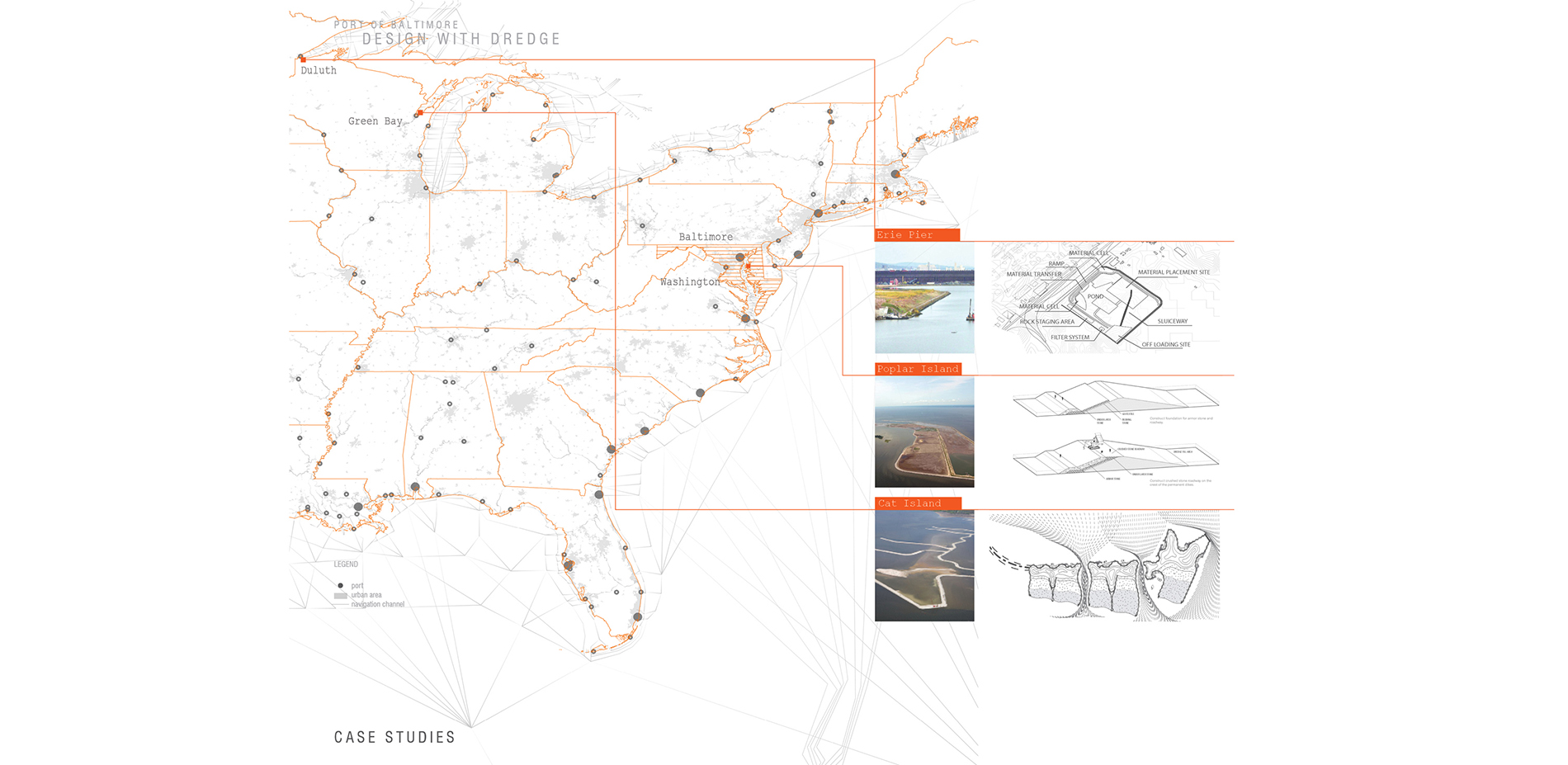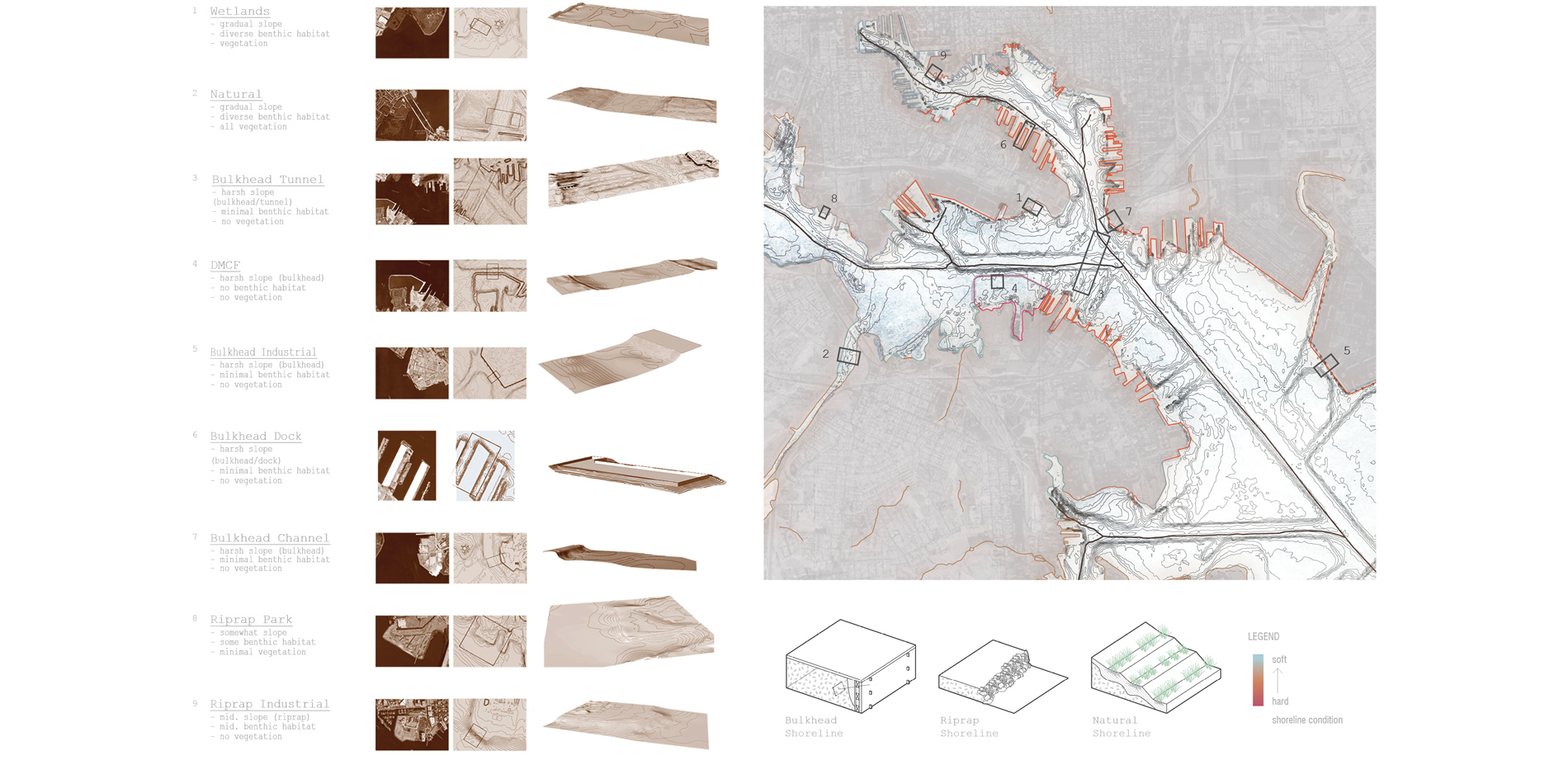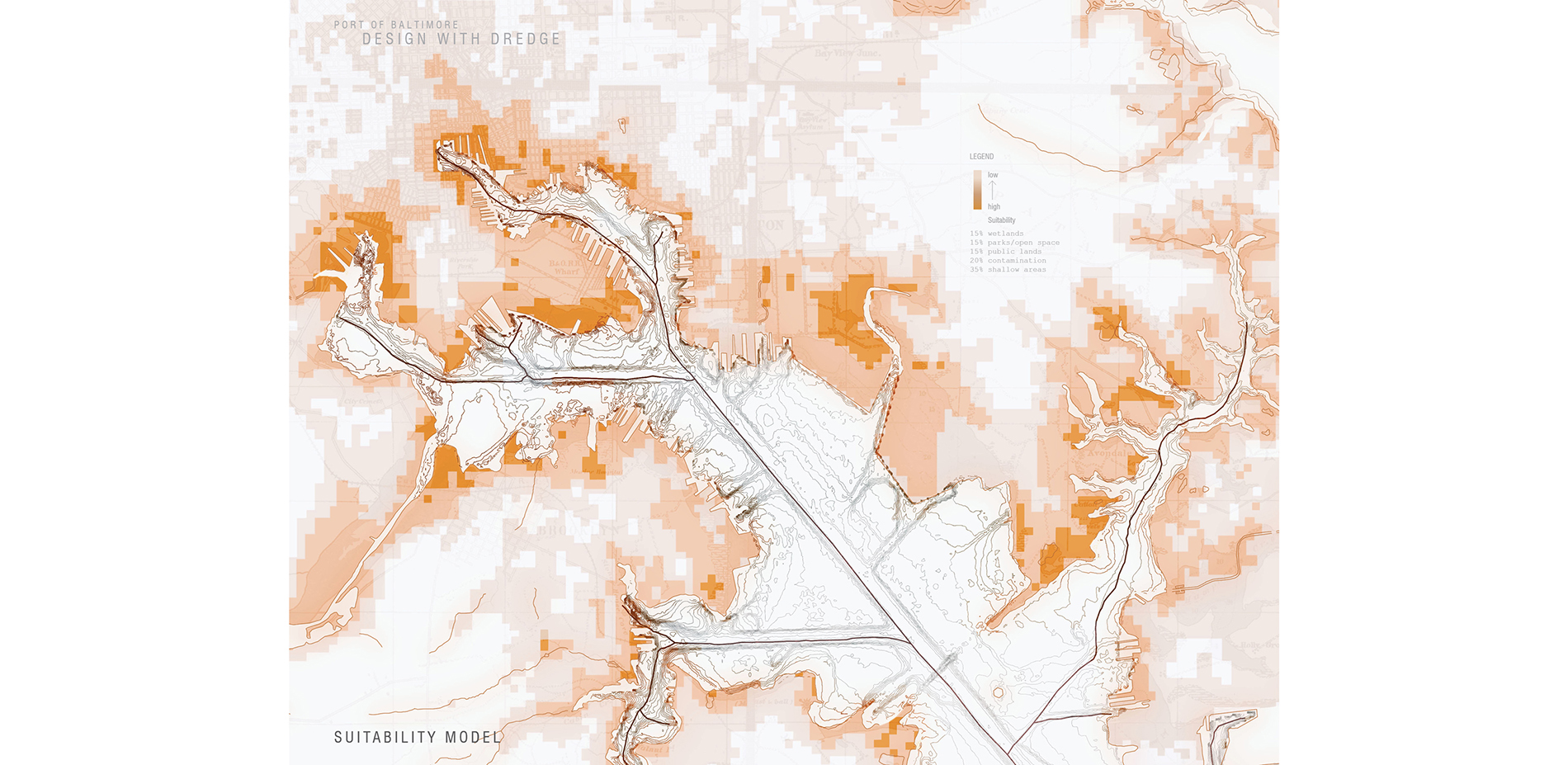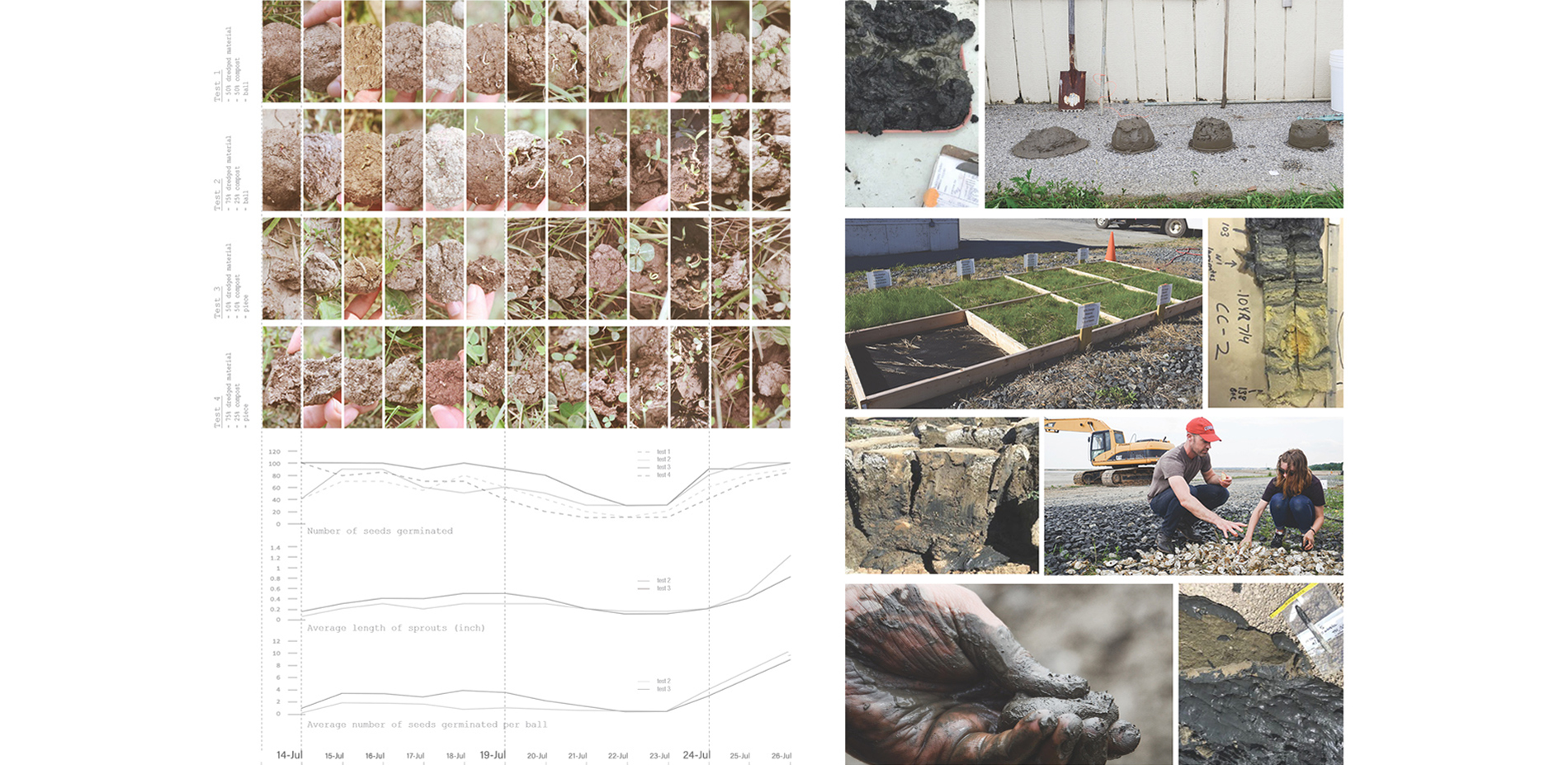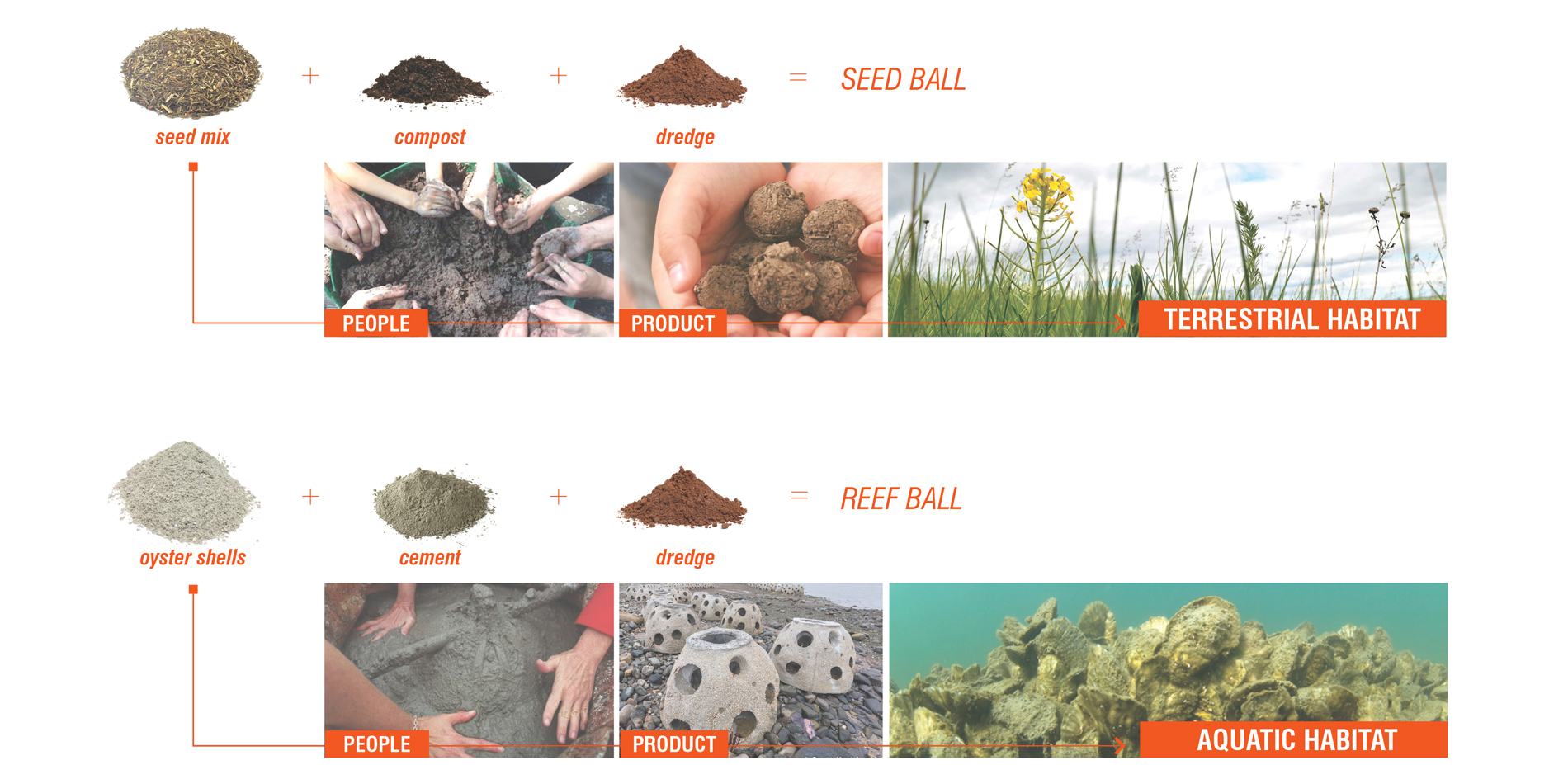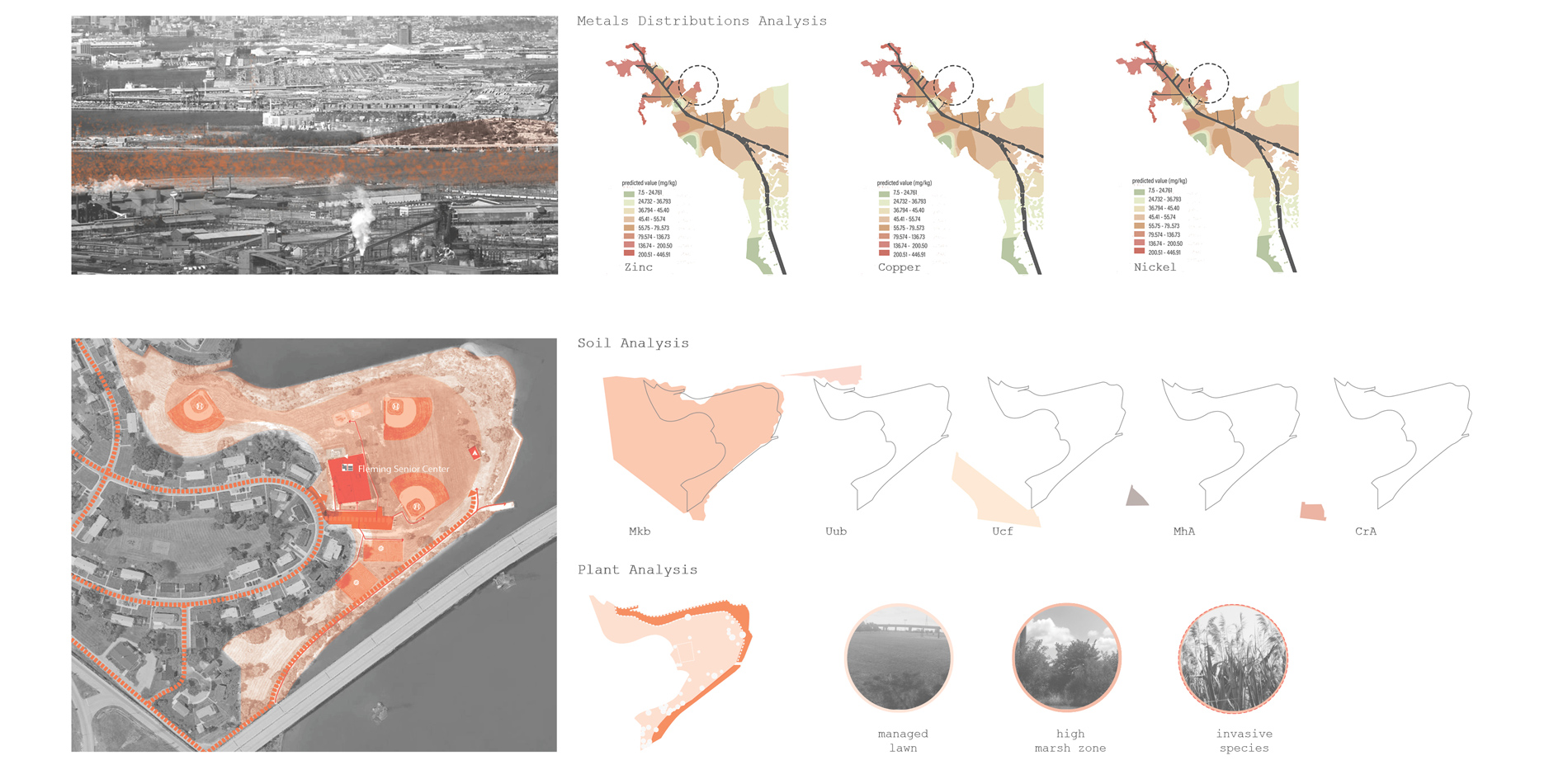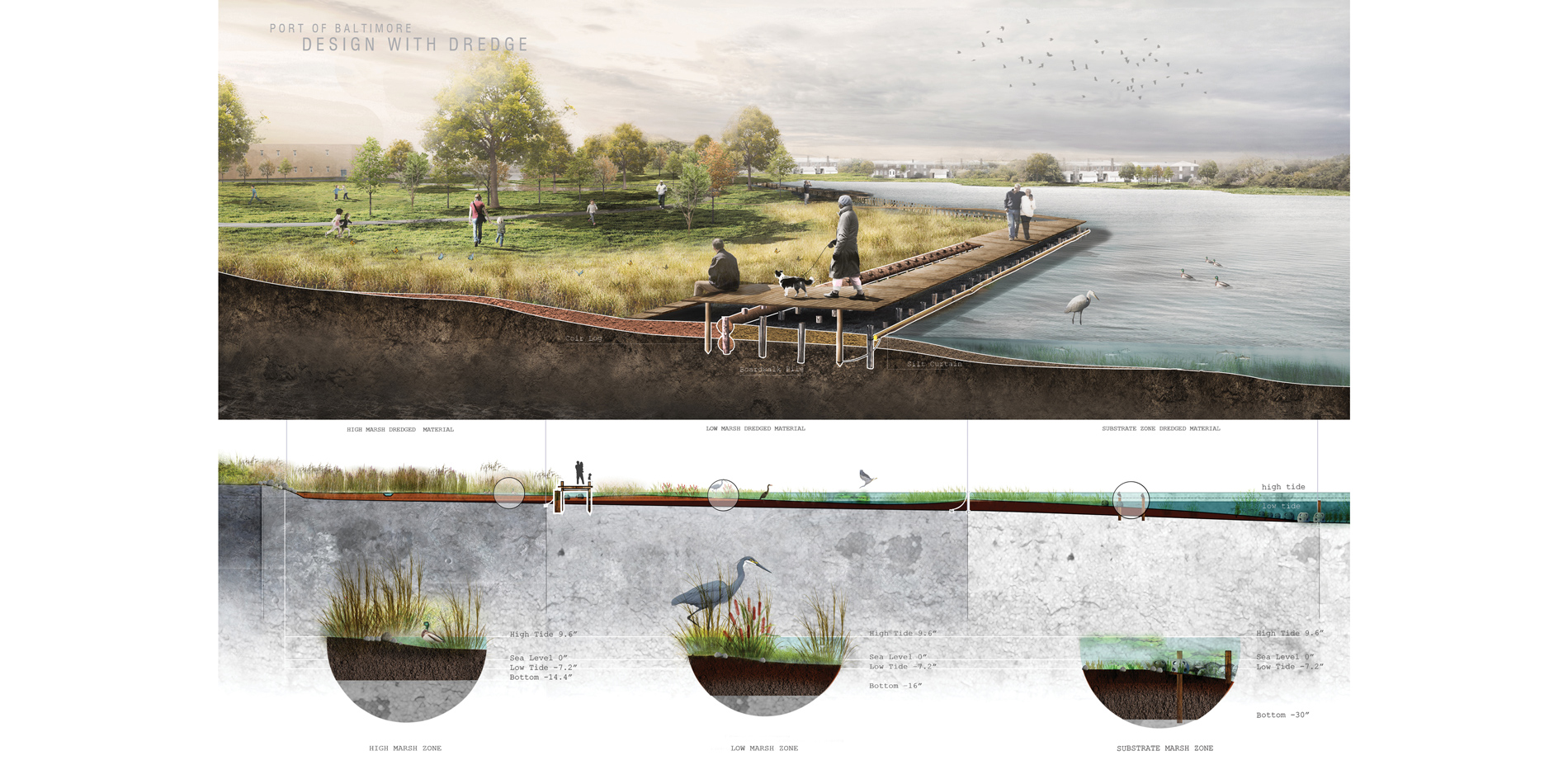Design with Dredge: Resilient Landscape Infrastructure in the Chesapeake Bay
HONOR AWARD
Research
Baltimore, MD, USA | Mahan Rykiel Associates | Client: Maryland Port Administration
It’s about positioning the profession in a different way through research that we in the profession should own.
- 2018 Awards Jury
PROJECT CREDITS
Lead Designer
- Mahan Rykiel Associates
Project Credits
- Design Director: Richard Jones, Mahan Rykiel Associates
- Team Leader: Isaac Hametz, ASLA, Mahan Rykiel Associates
- Principal Investigators: Isaac Hametz, ASLA, Mahan Rykiel Associates, Brian Davis, ASLA, Cornell University Research Associates: Jingting Li, Maddie Hoagland-Hanson, Xiang Huang, Qing Li, Shi Chen, Karen Kuo, Julie Shapiro, Bryan McKnight Associated Investigators: Zeynap Goksel, Katherine Goodrich, Luyao Kong
- Government Agencies: Maryland Port Administration, Maryland Geological Survey, USACE Baltimore
- District Industry Experts: Anchor QEA, Maryland Environmental Service
- Community Members: Innovative Reuse Committee, Turner Station Conservation Team, North Point Peninsula Council
- Educational Institution: Cornell University
PROJECT STATEMENT
Every year in the Baltimore Harbor natural and anthropogenic siltation processes infill waterways and navigation channels, necessitating the removal of 1.5 million cubic yards of sediment to keep the port operating. The Design with Dredge research program brings together practitioners, community members, academics, regulatory and policy officials, and industry representatives to advance shared conceptual frameworks, planning priorities, and applied landscape strategies for resilient dredged material management in the Baltimore region. Through cross-disciplinary collaboration, compound research methods, and direct stakeholder engagement the program provides a lens through which to explore emerging and future landscape infrastructure issues facing port cities and coastal communities. It also serves as a medium for material investigation and a cooperative paradigm for engaged civic action. In recasting the clays, silts, sands, and gravels of the Baltimore Harbor as a substrate of resiliency, Design with Dredge is catalyzing the institutional and operational energy and knowledge of diverse stakeholders to reimagine what it means to live in a dynamic urban estuary where legacies of labor, innovation, and ecological justice overlap.
PROJECT NARRATIVE
Baltimore and its Port are part of a complex estuarine environment where legacies of labor, innovation, and ecological justice overlap. Every year in this dynamic environment, natural and anthropogenic siltation processes infill waterways and navigation channels, necessitating the removal of 1.5 million cubic yards of sediment from the Baltimore Harbor. Perceived predominantly as a waste product by the public and regulated by layers of state and federal legislation, these clays, silts, sands, and gravels are the substrate of coastal cities. Yet, they remain literally and figuratively liminal; trapped between land and water, and largely untapped for their potential in constructing resilient landscape infrastructure. However, with rising seas, surging storms, and subsiding coasts there is an urgent national need and an acute call for action in Maryland for innovative dredged material management practices that support multi-dimensional resiliency that align with the interests of the state's diverse group of stakeholders.
The Design with Dredge research program is a direct response to this call, providing a platform for cross-disciplinary collaboration that is being led by landscape architects and includes community members, academics, regulatory and policy officials, and industry representatives proactively recasting and reimagining Baltimore Harbor sediment as a primary building block and essential resource for constructing resilient urban landscapes in the region. The program utilizes design as a synthesis method to integrate the most up-to-date sediment science, regulatory frameworks, economic development agendas, and community programs to develop shared conceptual frameworks, planning priorities, and applied landscape strategies for resilient dredged material management. Within this context the Design with Dredge team has worked across space and time to deploy research methods that include cartographic projection, systems mapping, historical investigation, case studies, typology studies, suitability modeling, material testing, participatory action, and design projection to engage stakeholders, probe regulatory boundaries, and enhance the technical capacity of program partners in Baltimore and the Chesapeake Bay.
This compound research strategy can be understood as individual research investigations with discrete findings, a toolkit of techniques for applied research, and an organizing strategy to catalyze civic action. They are held together by the complex and negotiated terrain of the Baltimore Harbor landscape where histories, values, and possible futures of dredged material exist in tension, and where industrial, residential, and environmental land-uses compete for the water's edge. In the context of this collaboration, the expertise and agency of individual partners is augmented through the exchange of knowledge and engagement with an array of inductive, abductive, and deductive research methods. Greater than the sum of its parts, Design with Dredge is simultaneously a platform for pragmatic policy research, a vehicle for design innovation, and a mechanism to expand the field of action and actors in advocating for resilient landscapes.
In Maryland, the political and legislative climate is supportive of innovative reuse and beneficial use of dredged material as outlined in Maryland's 2001 Dredged Material Management Act, 2017 Maryland Department of Environment (MDE) Innovative Reuse and Beneficial Use Guidance Document, and 2017 Waste Reduction/Resource Recovery Plan Executive Order (01.01.2017.13) which states: "Whereas, Through source reduction, reuse, and recycling, Maryland can extend existing disposal capacity, reduce the need to construct new or expanded solid waste disposal facilities, conserve natural resources, including water and energy, increase the innovative reuse and beneficial use of dredged material, and support a productive economy through recovery of valuable resources." However, despite the goals outlined by the state, hurdles remain to actualizing projects that reuse dredged material for enhanced coastal resiliency, flood risk reduction, habitat restoration, community recreation, and/or other civic improvements. Significant challenges include negative public perception of dredged material, incomplete information about sediment processes and material qualities, siloed planning and policy strategies, and cost implications for co-benefit projects that address multiple dimensions of resiliency.
As such, each of the methods and products of the research project were tailored to investigate and articulate dredged material as an essential element in the culture, economy, and ecology of the Baltimore Harbor and Chesapeake Bay estuary, as well as a critical resource in regional resiliency and landscape infrastructure. Both qualitative and quantitative methods were used to chart variable dimensions, relationships, and potentialities of dredged material in time and space. Cartographic projections, deep sections, and system mapping reveal the prevailing dig and dump mentality that has shaped and reshaped the shoreline and benthic environment of the upper and middle branches of Patapsco River in service of monolithic industrial ends. Regional sediment mapping and evaluation of existing dredged material placement capacity makes clear the need for alternative management strategies as sediment sources flowing into federal navigation channels begins to eclipse the rolling placement capacity of sediment sinks. Under these circumstances, normative landscape criteria serve as fulcrum for synthesis; integrating technical, cost, and values-based considerations into a holistic framework for collaborative and engaged action. This Design with Dredge umbrella provides the conceptual and organization vessel to work across scales and disciplinary boundaries bringing the expertise of ecologists, engineers, regulators, industry, academics, and practitioners into a deliberate mode of applied inquiry. Regional and national case studies documenting advanced dredged material management practices provide signposts for synthesis and springboards for creative cross-disciplinary thinking. Whereas, local shoreline typology studies offer insights into existing conditions and opportunity sites.
Transitioning from insight to action, the project's suitability model is a flexible analytical tool that prioritizes sites for sediment-based resiliency strategies; accounting for feasibility and environmental justice constraints such as bathymetry, benthic pollutants, wetlands potential, and proximity to public parkland. Material tests and experimentation with dredged material provides a basis for future performance, as well as an entry point for participatory action and design projection. However, they do not attempt to prove statistical significance or guarantee results. Rather, they serve as specific analogs for one-to-one design exploration that establish a meaningful dialogue between existing conditions and future possibilities. Moreover, they communicate an engaged and cross-disciplinary methodology that is digestible by experts and public stakeholders alike. This multilingualism is central to the Design with Dredge research program, which attempts to overcome both entrenched negative perceptions of dredged material and recover its capacity as a substrate for resilient landscape infrastructure. To that end, material studies guide participatory action, which take shape as hands-on community workshops to create seed balls and reef balls that incorporate dredged material with other ingredients such as compost and native meadow mixes or oyster shells and cement for restoration of terrestrial or aquatic habitat respectively. Design projection is an operative meta-research method, sampling and synthesizing findings from other modes of inquiry to formalize spatially explicit and site specific propositions for urban resiliency. Perhaps more importantly, it is also a mechanism to catalyze and sustain cooperative action in the Baltimore region, providing project partners and the public a prism through which to reimagine and recreate their relationship to dredged material.
The Design with Dredge research program represents an ongoing effort to recast and restore urban sediment as an essential component of resilient urban infrastructures. As a collaborative and interdisciplinary undertaking, the project attempts to describe the complexity and interconnectedness of anthropogenic and natural siltation processes, as well as to catalyze specific action in the Baltimore-Chesapeake region. This approach embraces the methods and knowledge of descriptive science and the normative agency of design research. In contextualizing dredged material beyond the logistical, industrial, and mechanistic, the program aims to literally and figuratively create new ground for estuarine cities upon which to grow socially, culturally, ecologically, and economically vibrant communities. By doing so, we maintain the hope expressed by the philosopher John Dewey that 'The designs of living are widened and enriched. Fulfilment is more massive and subtly shaded.
